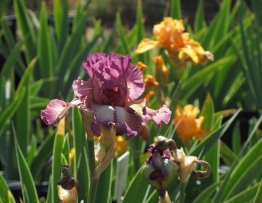Conejo Audubon Bird Friendly Garden Tour-Bob’s House!
This year the Conejo Valley Audubon Bird Friendly Garden Tour has gone digital. Our garden will start with a short video and several panorama “stills” and close up stills.
Ah, how long did the garden take to finish? Anyone that gardens as a hobby knows a garden is never finished. My garden has gone through 3 major renditions over the 20 odd years we’ve lived here. Plants do wear out, get ratty and it’s more fun to replace something that’s ratty that completely new and different. Once you start with “the new and different” the rest of it all has to go. I also like to try things in my garden that we grow at the nursery or at least that’s my excuse.
Most of the “anchor” plants feed hummingbirds and many these plants do double duty feeding butterflies and various types of bees. I’m defining “anchor” plants as those that are used frequently not just a few here or there- here they are with both botanical and common names.
Salvia – spathacea, leucophylla, hybrids- hummingbird sage, purple sage, and cleveland type hybrids.
Heuchera maxima- coral bells
Zauschneria mostly ‘Catalina’ and ‘Carmen’s Gray’- California fuchsia
Galvezia – island snapdragon
Sphaeralcea mixed- desert mallows
Calylophus berlandieria – sundrops
Pacific coast hybrid iris
Romenya coulteri or matilija poppies
Here’s our short intro video.
https://www.facebook.com/980510091974249/videos/247874473022574/
Salvia – spathacea, leucophylla, hybrids- hummingbird sage, purple sage, and cleveland type hybrids.
Heuchera maxima- coral bells
Zauschneria mostly ‘Catalina’ and ‘Carmen’s Gray’- California fuchsia
Galvezia – island snapdragon
Sphaeralcea mixed- desert mallows
Calylophus berlandieria – sundrops
Pacific coast hybrid iris
Romenya coulteri or matilija poppies.
Here are some “group” pics of the front and the sun, shade, and side, and a section from the back yard.
The front sun…
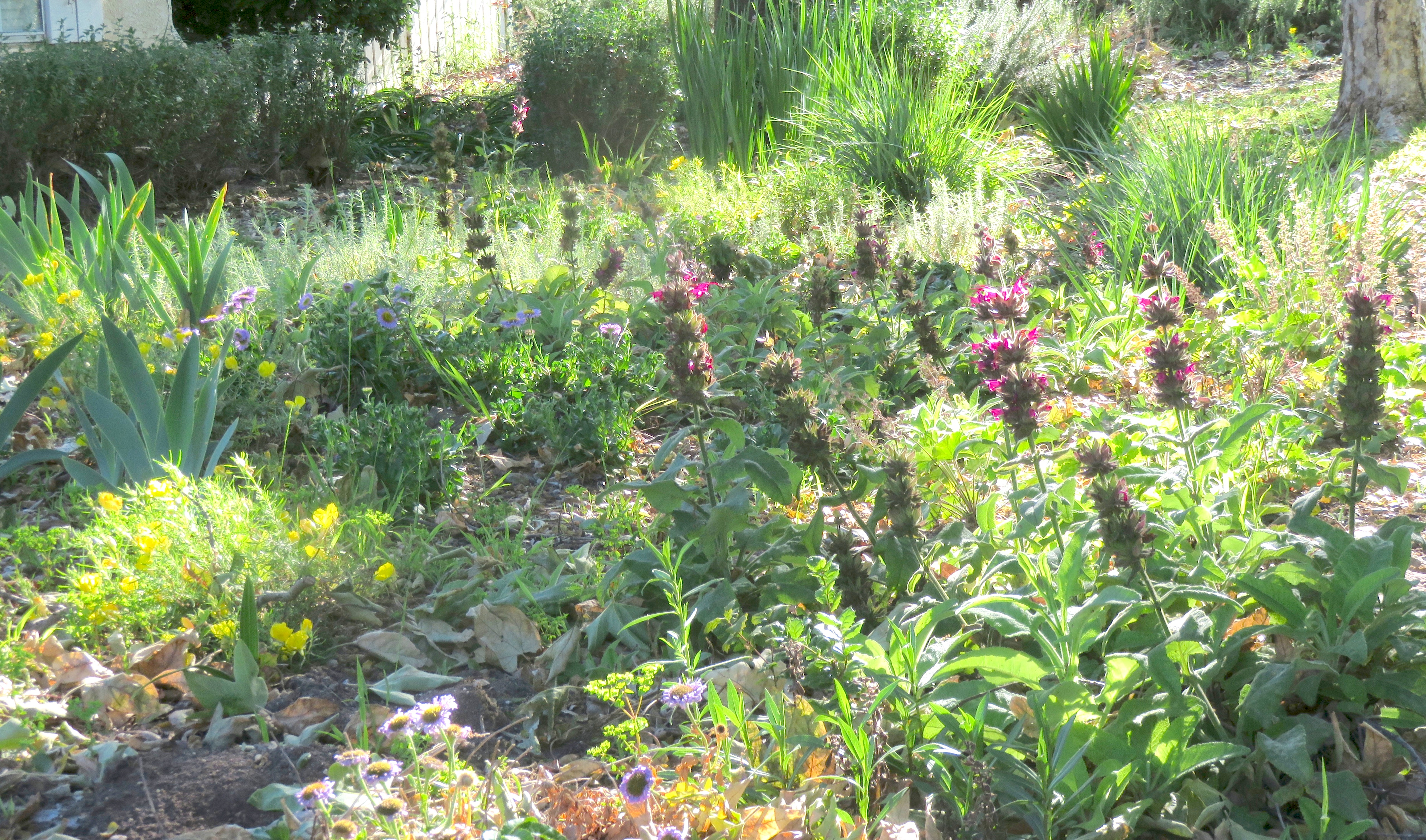
Here are mostly hummingbird sages, easy to grow and flower spring and fall. Hard to see but there are also lots of California fuchsia. These bloom in summer and fall when many of our natives are going to seed. This provides summer and fall color plus lots of food for your hummingbird friends.
Across the path from the meadow is the shady mostly pacific coast iris-some of the iris it’s a long path.

Rich in nectar feeding the hummingbirds.
The flowering side garden- full sun and nasty soil.
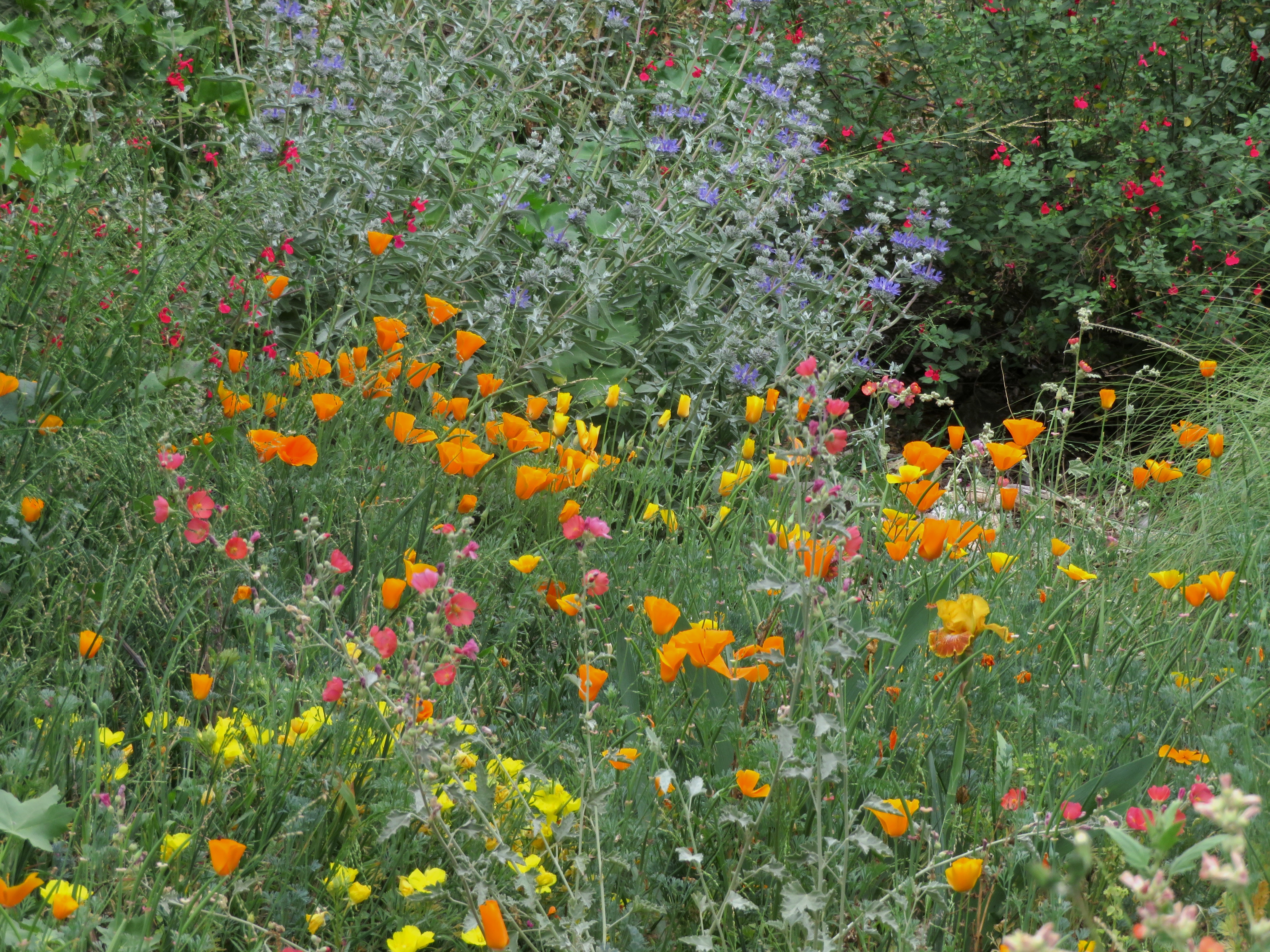
This is the flowering side yard in spring. Lots of different sages- tube flowers for hummingbirds and butterflies. And, California poppy and their soon to be seeds- bird food. Another section of the side yard has the matilija poppie. These make a nice border between our house and our neighbor and they like them too.
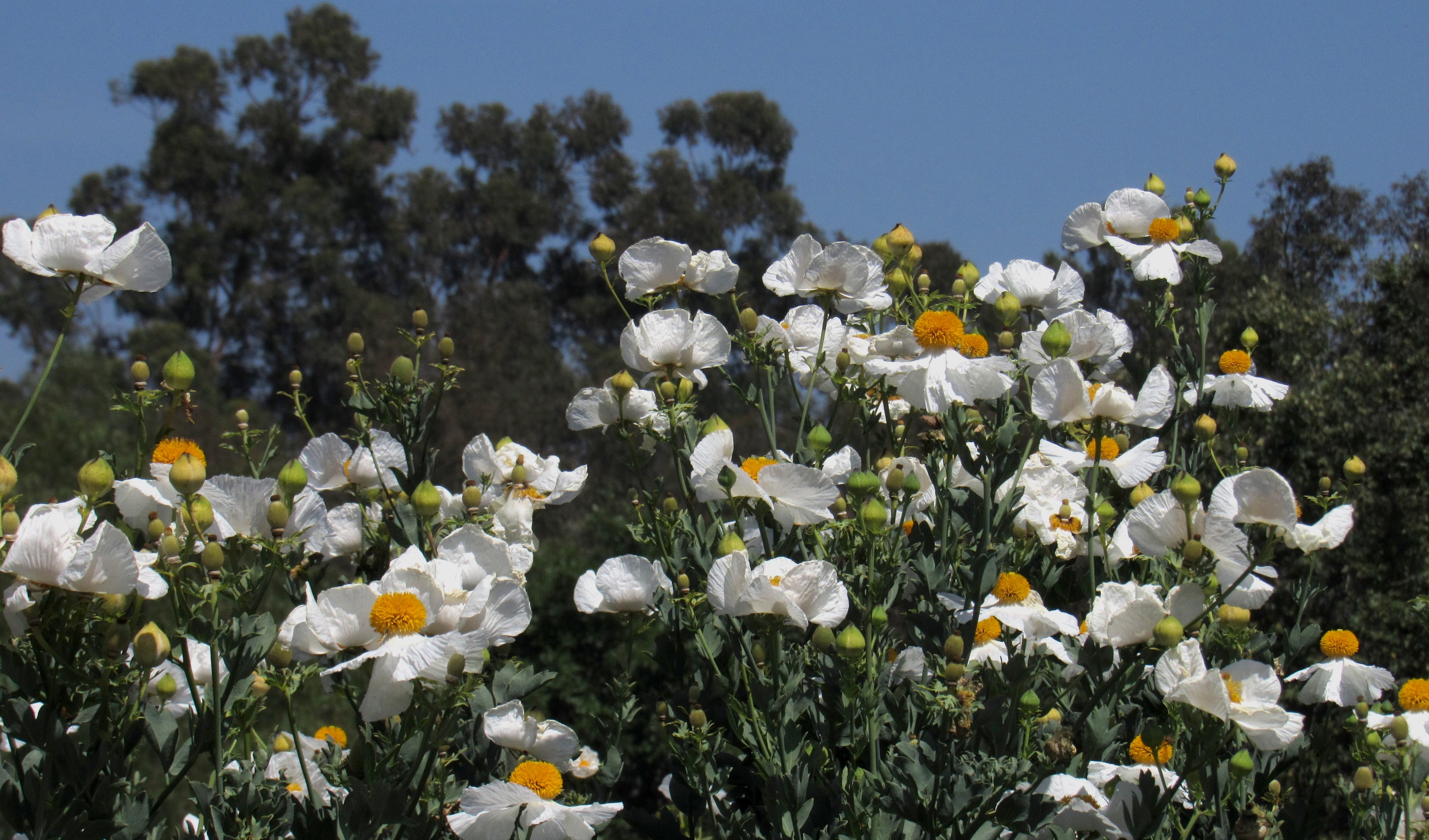
One of the sections of the back yard, the side that looks the best.
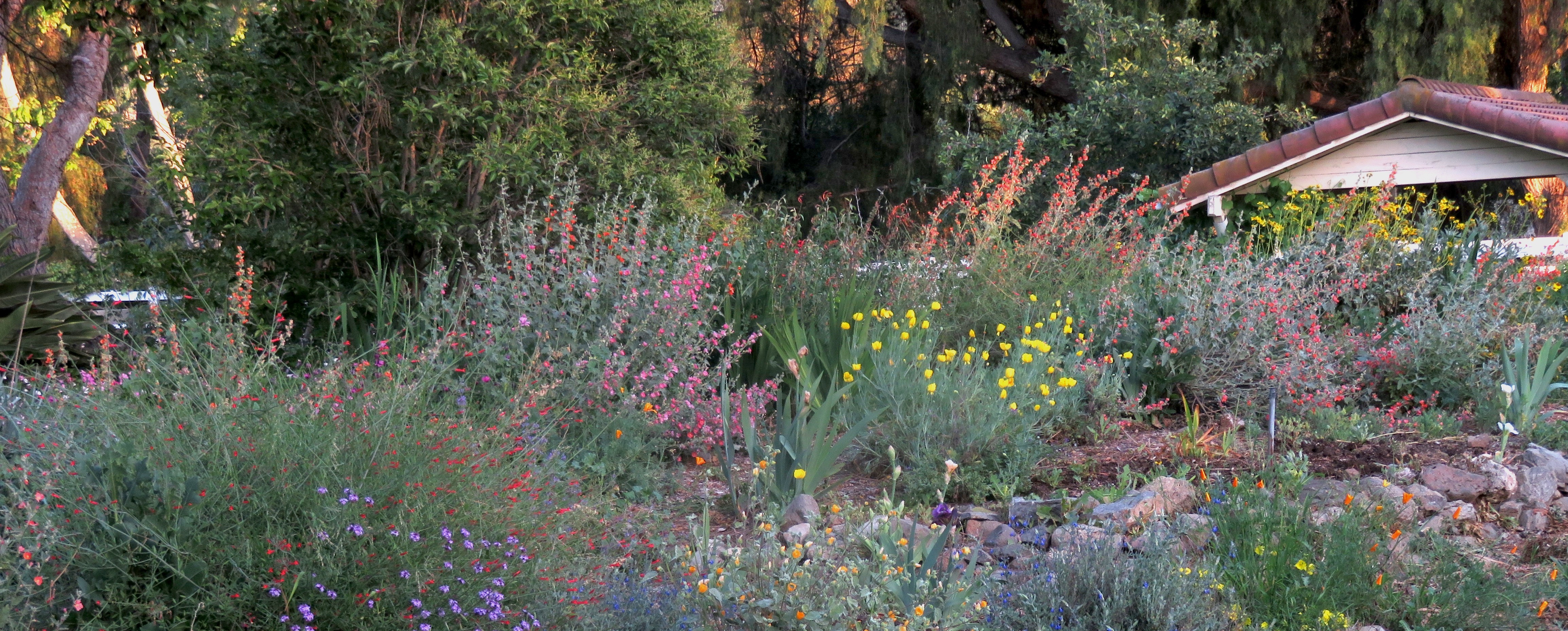 Lots of desert mallows and red island snapdragons, red Salvia lemmonii.
Lots of desert mallows and red island snapdragons, red Salvia lemmonii.
Section by Section Close Up
Our meadow area is part shade from a large oak tree and the house. The majority of the plants are hummingbird sage, Heuchera maxima, Sundrops, and for summer blooming and feeding- California fuchsia.
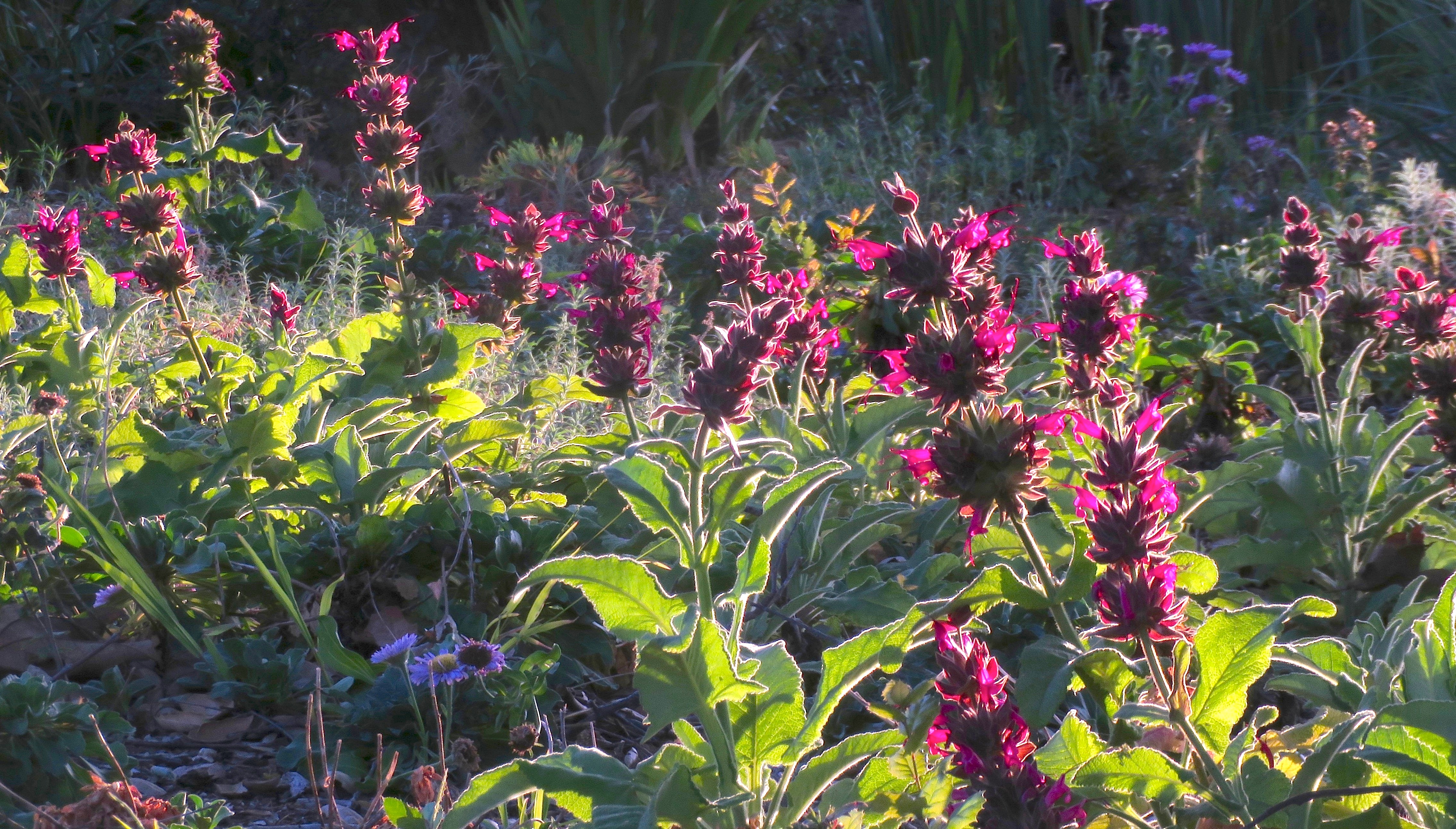
And and action shot….
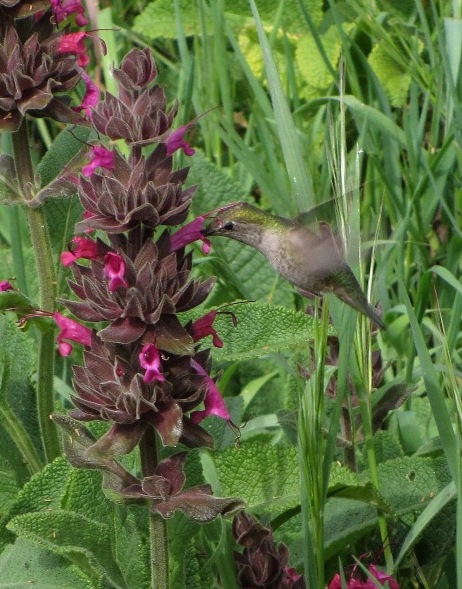
In the wild you would see these growing in shady areas under oak trees. In your garden and mine they flower spring and again in fall.
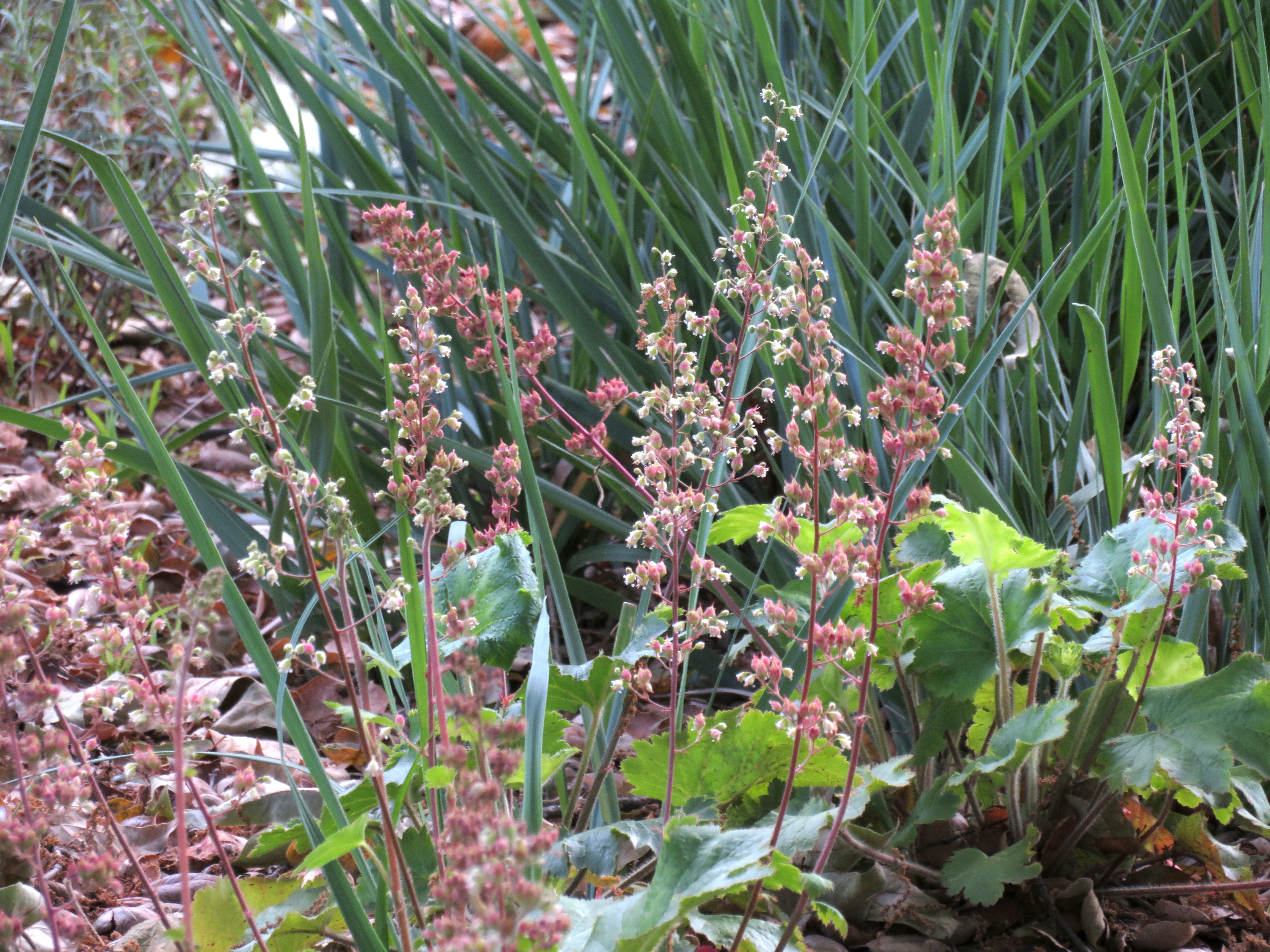
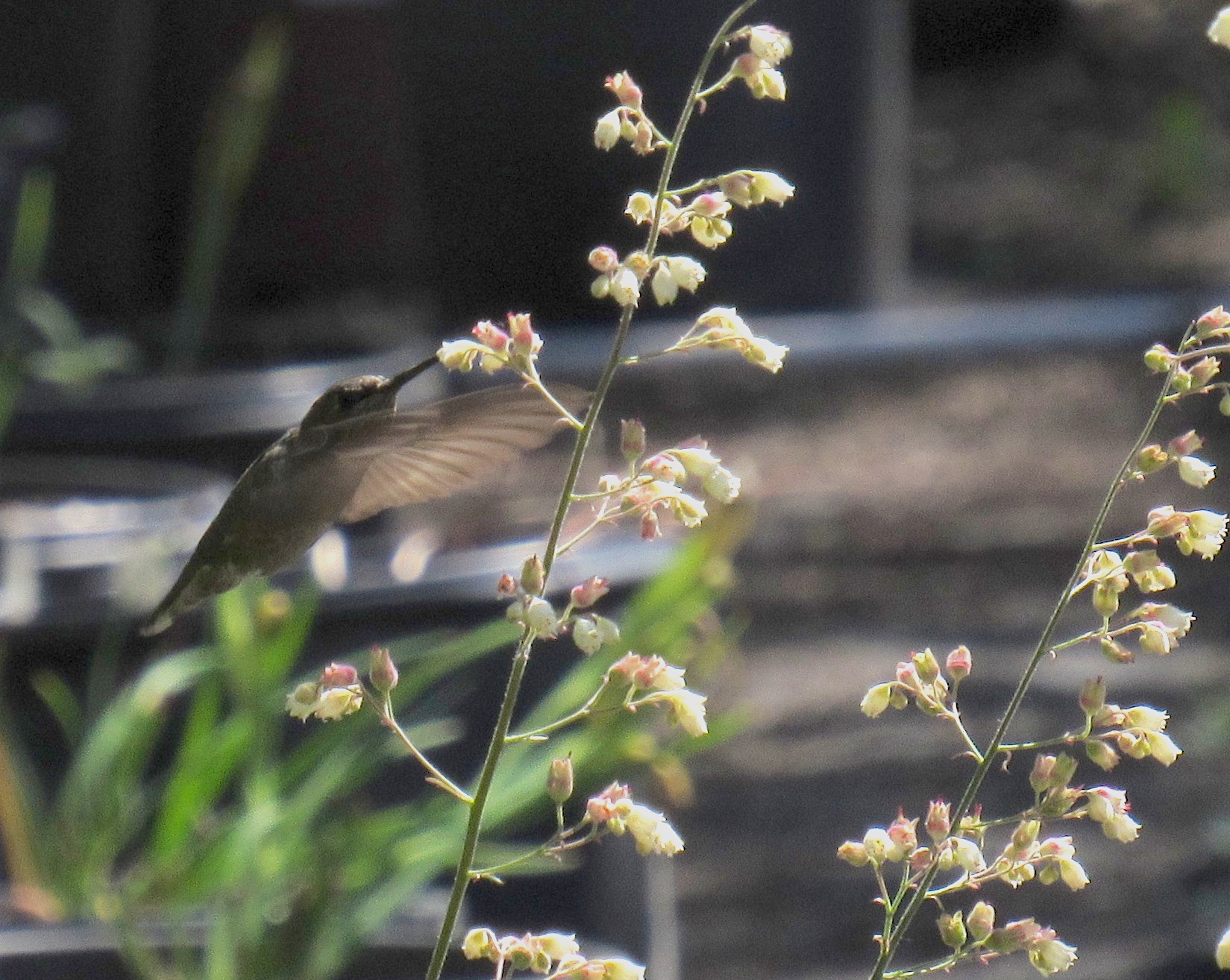
Heuchera maxima and other types produces nectar around the flowers that the hummingbirds eat. By the coast you can plant these in the sun and the more inland the more shade. Flower late winter through spring.
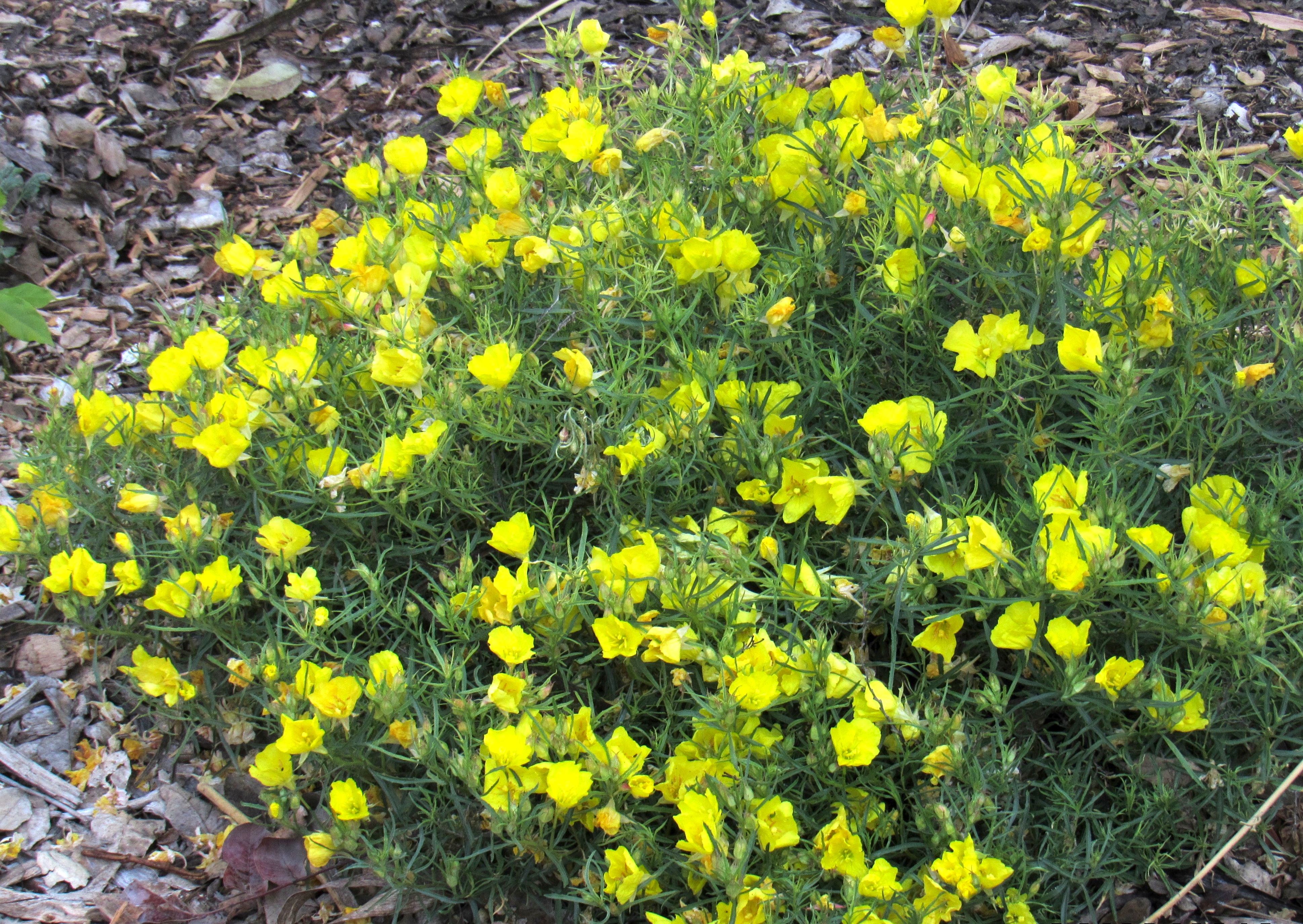
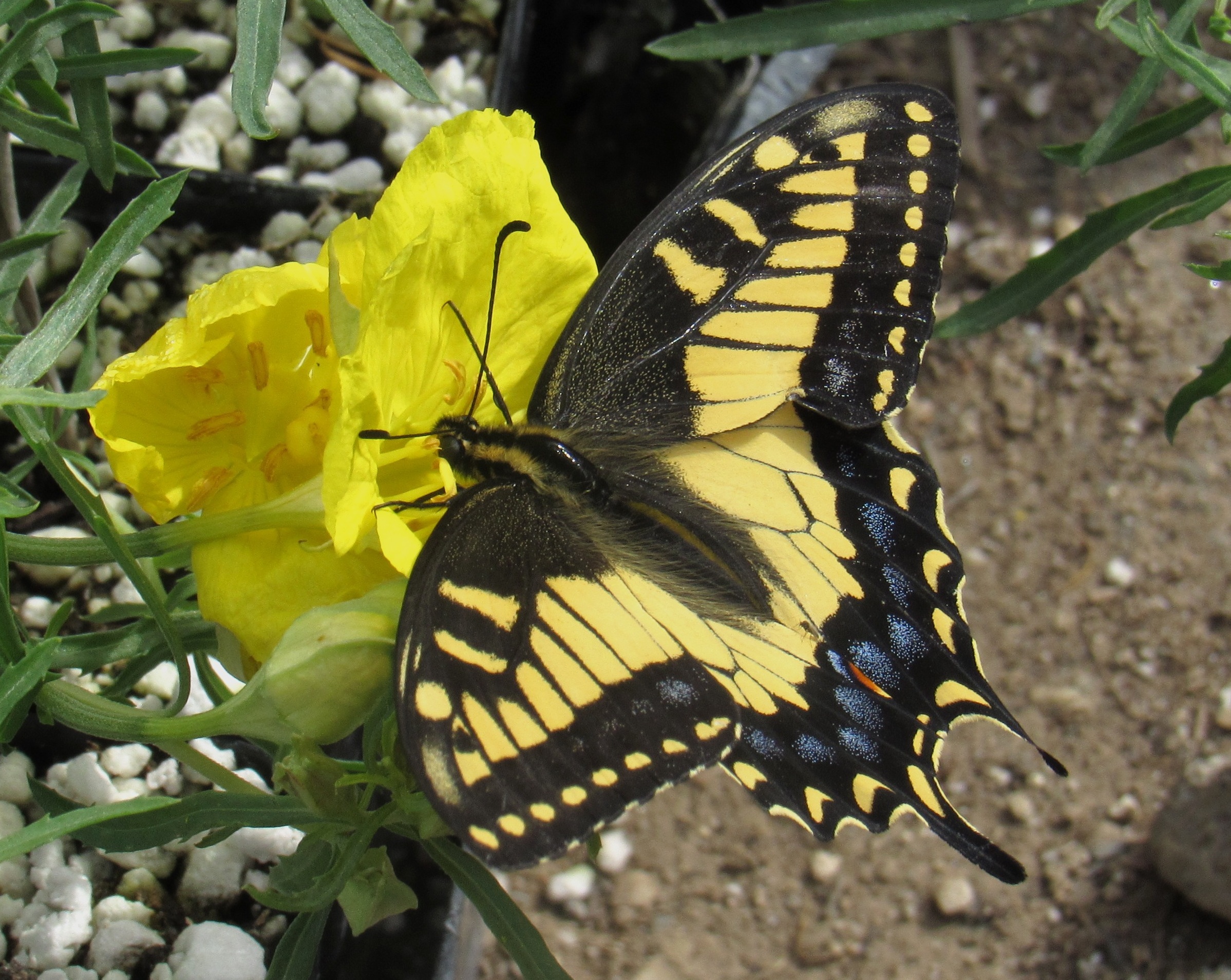
Sundrops or Calylophus are southwest natives that will grow and flower in sun to part shade. Low growing and flower just about all year. Usually you’ll see bees eating but this time a swallowtail.
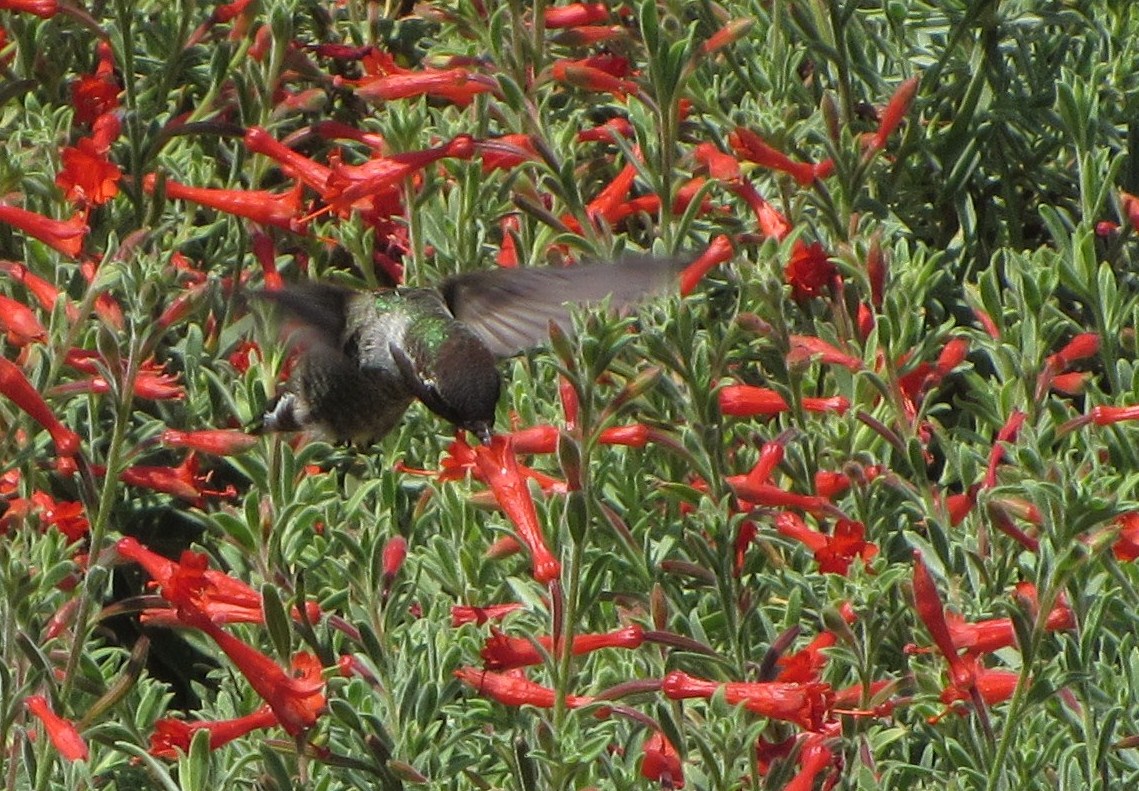
I sort of took a little bit of poetic license. The California fuchsia in my garden aren’t flowing. The won’t flower until summer and are one of the few natives that do. When they do flower the flowers are bring red and they catch your eye and they hummingbird’s eye too.
Shade Under the Oak Tree- Some of our many pacific coast irises. I guess you could say we more or less specialize in these and they’re flowering now. Come in all color combinations for your shade garden.


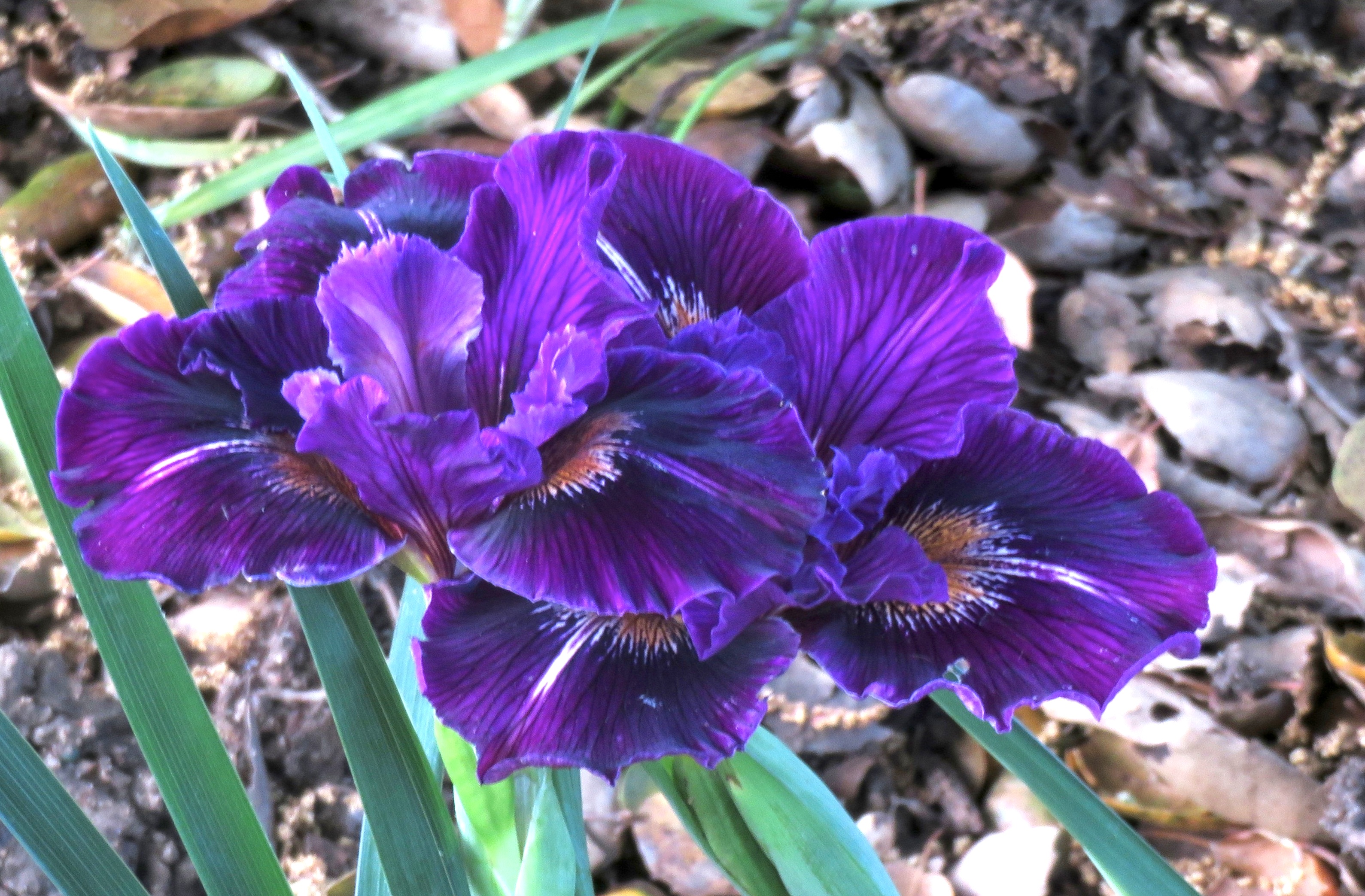
Spring flowering with large 4″ flowers and provide good food for both bees and hummingbirds.
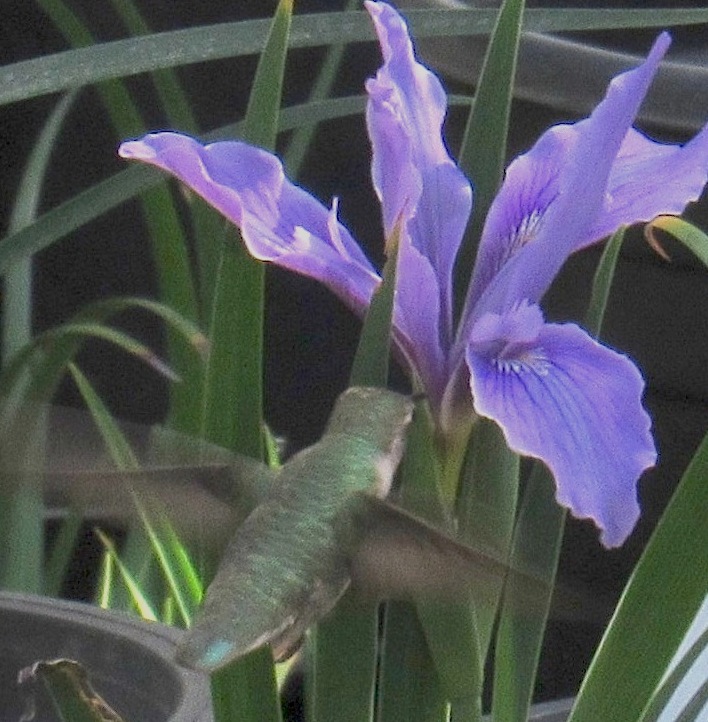
Spring flowering intensely now at the nursery!
The Side Garden with the Neighbors.
This is where we use a lot of desert mallows and matilija poppies.
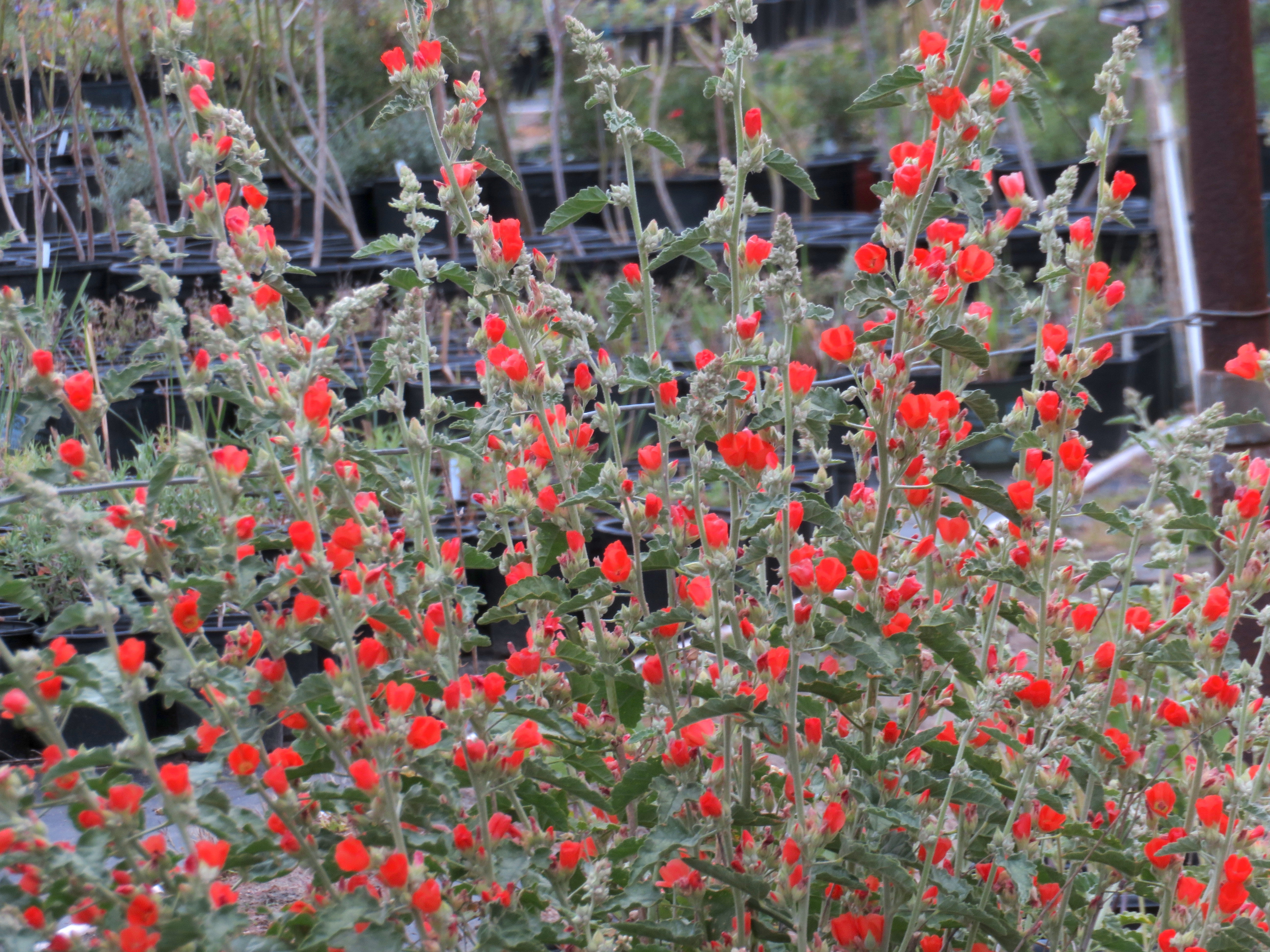
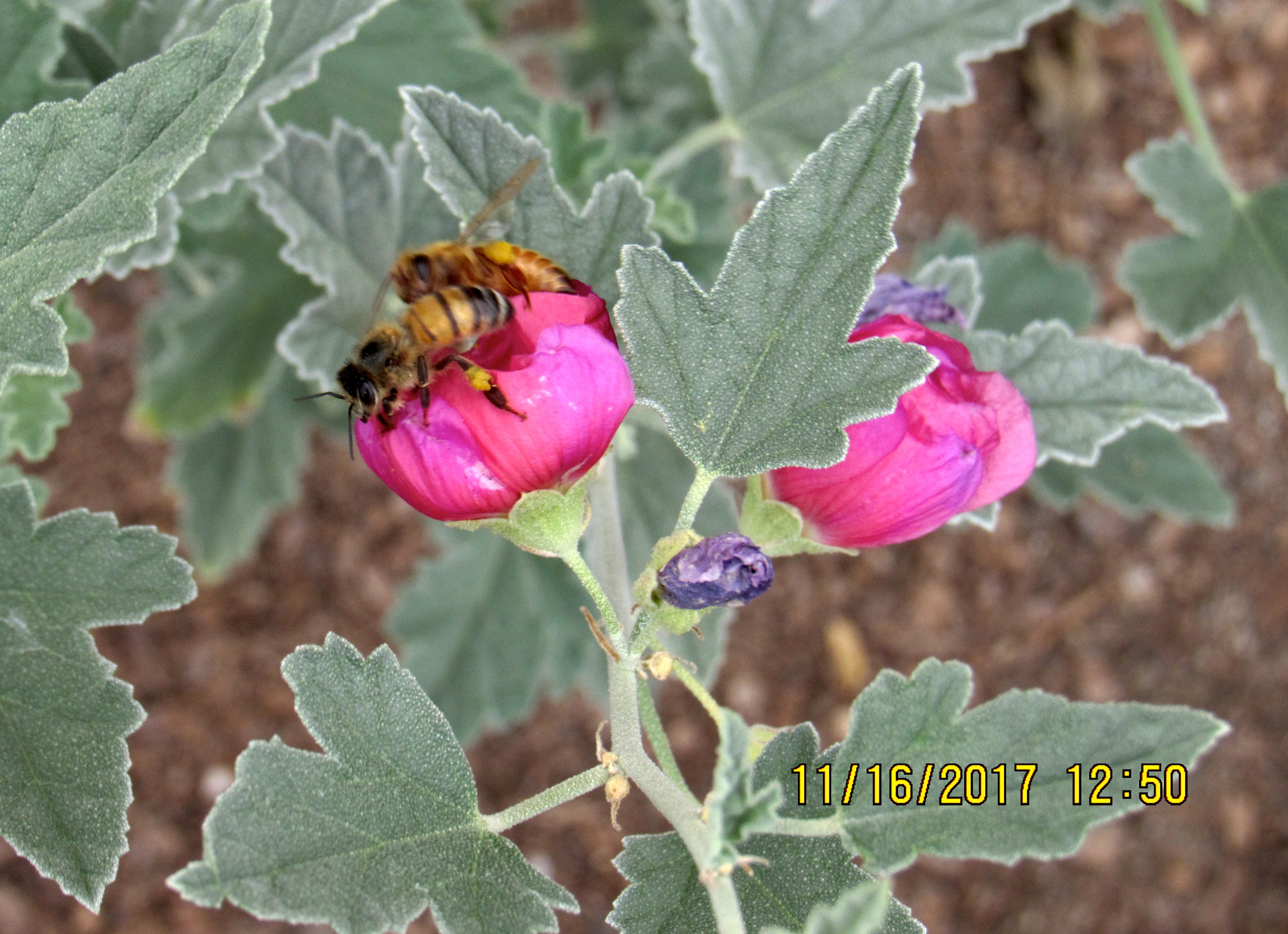
The mallows are full on sun and terrible soil. They’ll flower all year if you trim them back when they done – regrow and flower again. Mostly orange in Calif. but in the southwest you
pick up other colors like pinks and they cross easily.
The matilija poppies also grow on the side yard. Excellent for feeding the bees and flower arrangements.
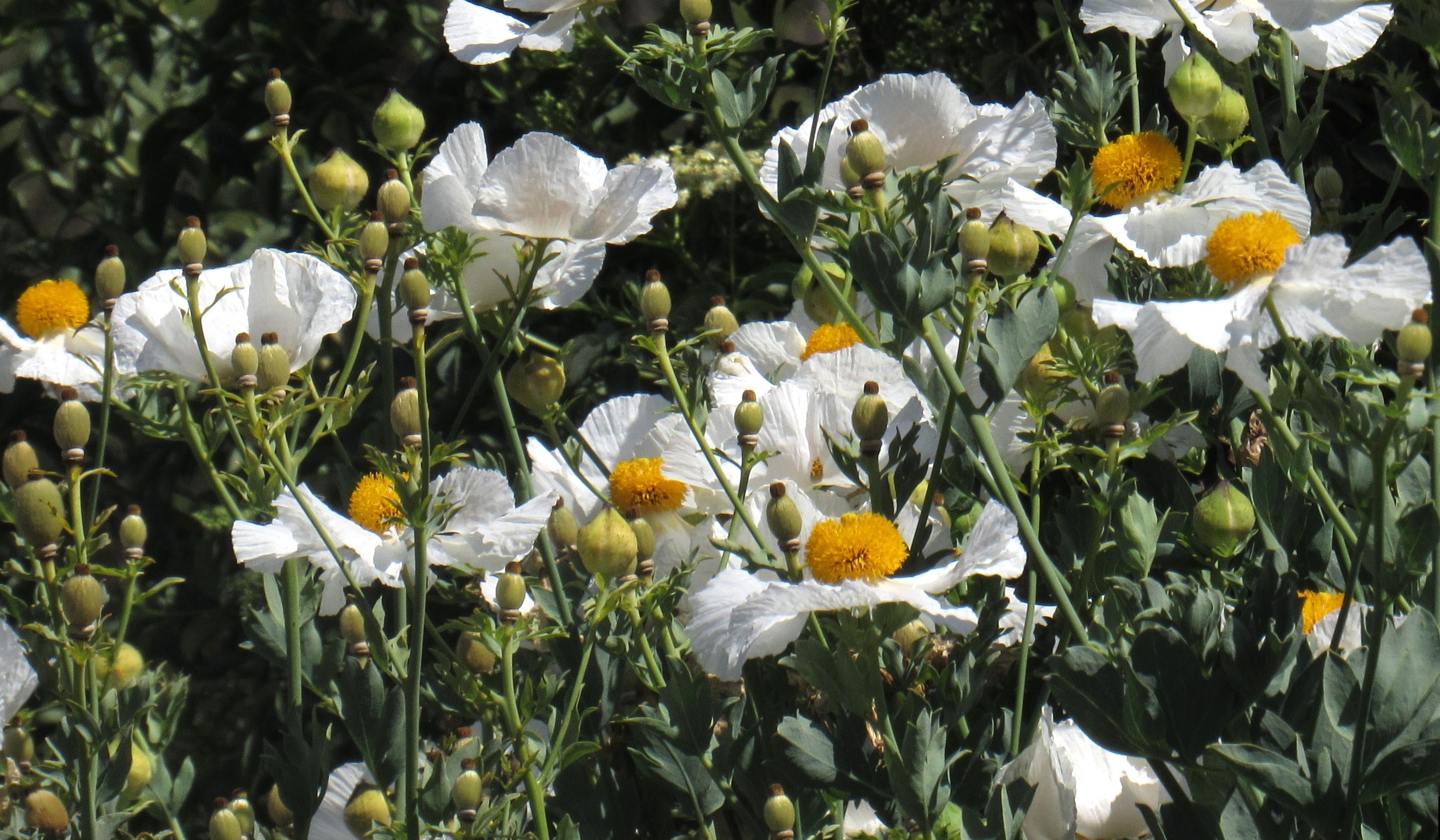
And for the bee action which starts around 8 am and ends about 2pm as they head back to the hive.
https://www.facebook.com/980510091974249/videos/295601234358395/
Last and final section is an area of the back garden….since we intro.’d it at the beginning, this is a copy of and earlier slide. The only thing new in this section is the Galvezia or island snapdragon. These can reach a size of 4′ x 4′ and will flower most of the year with red tube flowers for the hummingbirds. This will be followed by a close-up complete with hummingbird.

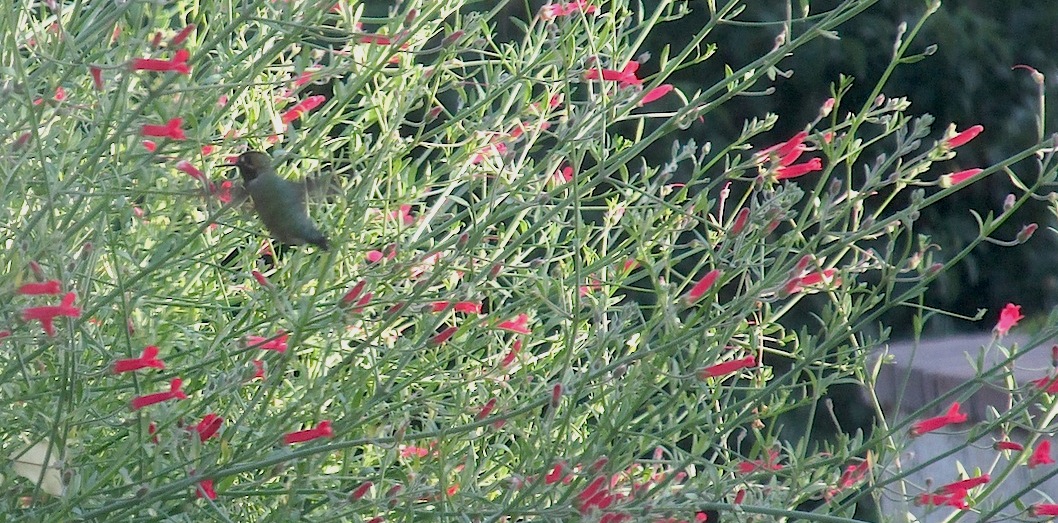
This concludes my contribution to this year’s Conejo Valley Audubon Bird Friendly Garden Tour. Being somewhat of a big talker I can say it’s easier to talk about than write about but next year is another year and there’s only up side, I hope.
A little more time to add the flowers with the birds and other members of the Wild Kingdom.
